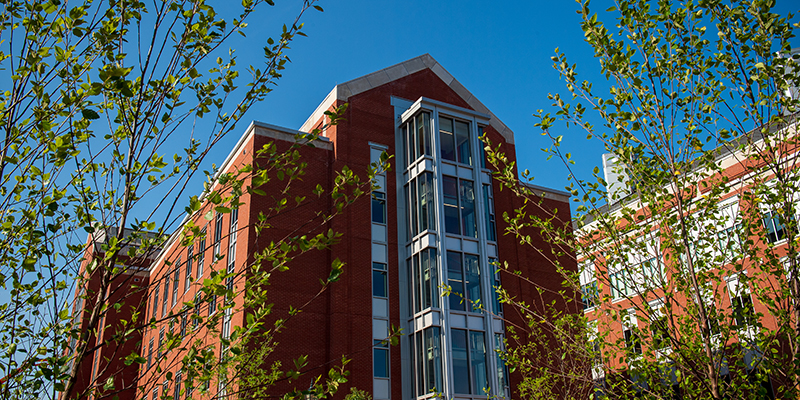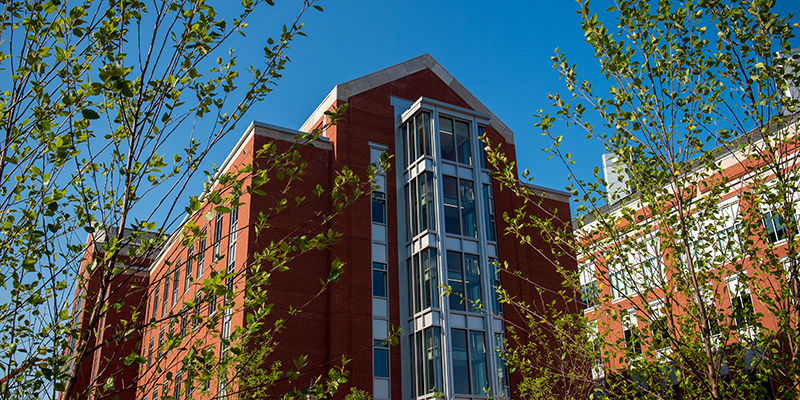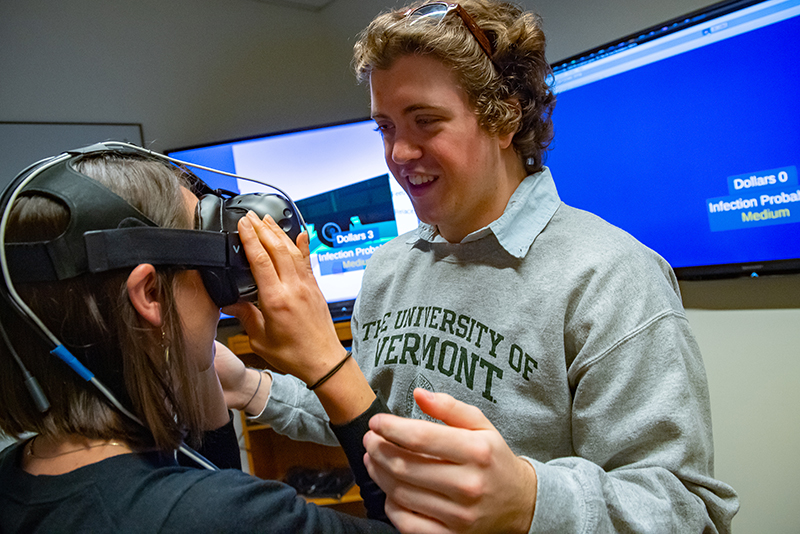For the fifth year in a row, UVM’s incoming class has achieved the highest academic credentials in the university’s history. The Class of 2023, an estimated 2,640 students, have earned an average SAT score of 1275 and an average ACT of 28.9, record highs for any incoming class.
Beyond test scores, the Class of 2023 boasts a number of standout students with fascinating backgrounds — including inventors, entrepreneurs, debate team captains, first chair violinists, a circus performer and a cancer researcher. The newest Catamounts have competed around the globe in ski racing, cycling, poetry, and the World Dairy Expo. And they’ve improved their communities, from raising funds to build tiny homes in Detroit to helping neighbors study for citizenship tests.
More students accepted their offer of admission to UVM this year, generating the highest yield rate for an incoming first-year class since 2005. In an admissions essay, one incoming environmental sciences major shared this in answer to the “Why UVM?” prompt: “What I ultimately look for in a school is if it will make me the best person I can be. With its enriching atmosphere of scientific discovery, academic excellence and innovation, I know UVM will allow me to grow as a person and as a scientist, and to use my passion to contribute to society as an undergraduate and beyond.”
Get a sense for the first-year class, what drew them to UVM and what they’re most looking forward to as their college years begin:
The incoming students hail from 44 states and 14 countries. Approximately 21 percent are Vermonters, and an estimated 12 percent are students of color. Thirty-six of Vermont’s Green and Gold Scholars, outstanding students from around state selected by their high schools to receive this designation, have chosen UVM.
First-year students arrive on campus Friday, Aug. 23, for Opening Weekend, an annual program that helps acquaint new students with college life. The weekend culminates in a convocation ceremony, Sunday, Aug. 25 at 6:30 p.m. in Patrick Gymnasium, to celebrate the opening of the new academic year. Following convocation, the UVM community will process down Main Street to the University Green, where the Class of 2023 will participate in a twilight induction ceremony.
Classes begin for all undergraduates Monday, Aug. 26.
New this year
Another newcomer to UVM this fall: President Suresh Garimella, who began his tenure as the university’s 27th president this summer. He comes to Vermont from Purdue University, where he was the Goodson Distinguished Professor of Mechanical Engineering and an administrative leader in several roles focused on engagement and outreach, serving most recently as executive vice president for research and partnerships. A member of the National Science Board, Garimella is co-author of more than five hundred publications and thirteen patents.
Several new academic programs launch this year, including a major in dance, a minor in reporting and documentary storytelling, an undergraduate certificate in integrative health and wellness coaching, and an online degree completion program for students who have earned some college-level credits but do not have a bachelor’s.
Innovation Hall (below), the final phase of UVM’s new STEM Complex, will hold its first classes this semester. It joins Discovery Hall to complete UVM’s cutting-edge facility for scholarship, collaboration, and innovation in science and technology. Specialized facilities within the complex include the MassMutual Center of Excellence for Complex Systems and Data Science, supporting research aimed at better understanding human wellness through data analytics.
Ground has broken for the new Multi-Purpose Center on Athletic Campus. The project, scheduled for completion in summer 2021, includes a new recreation and wellness center and an event center for UVM basketball and a variety of academic, social, and cultural programming.
Fall events
Signature events this fall include:
- Graphic Novels to Watch Out For with Alison Bechdel. Oct. 2.
- The installation ceremony for President Suresh Garimella. Oct. 3.
- A visit with Congressman John Lewis. Oct. 7.
- The Burack Lecture Series will host several events, including poet Ross Gay, Oct. 8, and climate-change expert Michael Mann. Oct. 10.
- 2019 George D. Aiken Lecture: An Evening with Preet Bharara. Nov. 14.
Source: UVM News







